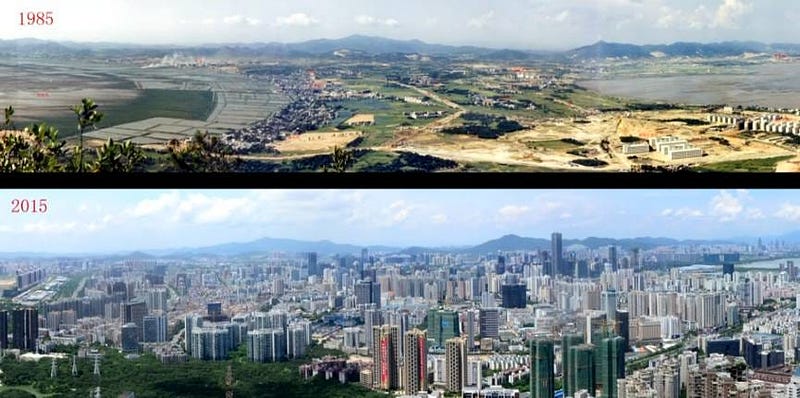Innovative Solutions Through Pilot Zones: Lessons from China
Written on
Chapter 1: The Importance of Pilot Zones
In a world filled with challenges, many have known solutions. Yet, the implementation of these solutions often falls short. Why do we hesitate to take action? What holds us back from striving for better outcomes? The barriers often stem from politics, fear, and bureaucracy—factors that should not prevent progress.
This paragraph will result in an indented block of text, typically used for quoting other text.
Section 1.1: The Case for Land Value Tax
One striking example is the Land Value Tax (LVT). As discussed previously, the LVT stands out as a potent policy to enhance economic growth and ensure inclusivity. Economists across the political spectrum frequently herald it as the “ideal tax.”
In the late 1800s, an opportunity to adopt the LVT presented itself, but instead, society opted for less efficient taxes, like income and property taxes, which stifled growth. Today, introducing an LVT is nearly impossible due to entrenched interests that have developed over the past century. Therefore, the optimal setting for implementing a land value tax would be in pilot zones, areas not yet dominated by these powerful interests.
Subsection 1.1.1: Learning from China's Experience

Pilot zones are not a novel concept for China. In 1978, Deng Xiaoping initiated challenging economic reforms in specific areas known as Special Economic Zones (SEZs). These zones were selected for their relative lack of development and minimal vested interests, which made them ideal for experimentation without significant tax implications. Shenzhen emerged as one of the first pilot zones.
The Killing Zone: How & Why Pilots Die explores the inherent risks faced by pilots and the importance of understanding these dangers in the context of aviation.
Shenzhen's economic reforms yielded rapid success, transforming the village into a prosperous metropolis within a generation. The insights gained from Shenzhen were subsequently applied in other pilot zones, such as Shanghai’s Pudong “New Area,” which also experienced remarkable growth.


The successes of Shenzhen and Shanghai illustrate the Chinese philosophy of “crossing the river by feeling for the stones.” This approach emphasizes careful experimentation and learning from each step before proceeding further.
No-Fly Zones and Controlled Airspace discusses the significance of regulated airspaces and their role in ensuring safety and order in aviation.
The global community can draw valuable lessons from China's experience. Pilot zones facilitate the testing of innovative ideas while gathering essential data to refine theoretical policies, helping to mitigate resistance to change.
Section 1.2: The Need for Cautious Innovation
The Chinese model is logical; complex systems rarely achieve perfection on the first attempt. For instance, Toyota doesn’t immediately mass-produce a new car model; they create multiple prototypes, testing and refining the design before it hits the market.
Why should we expect politicians to perfect something as intricate as healthcare reform on their first try? Without piloting reforms in designated zones to address potential issues, the likelihood of failure—or at least dissatisfaction—remains high. Disappointment can lead to reluctance to pursue further actions.
Chapter 2: The Path Forward
Pilot zones are vital for minimizing the risks associated with societal change and for ensuring the ongoing advancement of humanity. We cannot afford to remain stagnant. Staying on the riverbank is not an option; we must either venture across the river or risk being swept away by the current.